Participating in the 2023 AMS Annual Meeting
NCEI News Feed
https://www.ncei.noaa.gov/news/ams-2023
NCEI News Feed
https://www.ncei.noaa.gov/news/ams-2023
Sea Grant Fisheries Specialist Titus Seilheimer promised a “great adventure” during the premiere of a new episode of “Feral,” 8 p.m. Monday, Jan. 9, on the Outdoor Channel.
“In the summer of 2022, I joined Twin Cities chef Yia Vang and 2022 James Beard Award Finalist for ‘Best Chef Midwest’ on the waters of my home lake in northwestern Wisconsin,” Seilheimer said. “We were on a dangerous hunt for an invasive species lurking in the depths of Rusk County’s Clear Lake, the Chinese mysterysnail! Okay, so not a dangerous hunt, but a great adventure.”
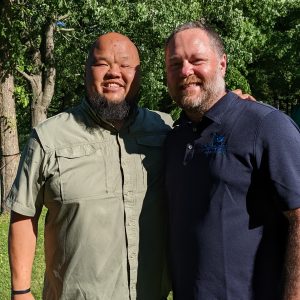
Titus Seilheimer (right) joins adventure-loving culinary explorer and top chef Yia Vang on a nationally broadcast show, “Feral,” to premiere at 8 p.m. Monday, Jan. 9, on the Outdoor Channel.
Chinese mysterysnails were first reported in the U.S. more than 100 years ago when they showed up in the San Francisco area. They were likely brought to North America for sale in live markets because they are a popular food in Asia.
They expanded their range over time and were first reported in Wisconsin’s Clear Lake in 2011. Seilheimer said, “I first spotted them shortly after and thought that big snails were a sign of good water quality. Soon after, at an invasive species conference, I was hit with the realization that those big snails in my lake were invasive mysterysnails.”
The snails are larger than the native species in Wisconsin lakes, so they can potentially outcompete the local snails. They also are more protected by their operculum (like a trap door), so they can avoid predation better than native species.
In addition to his culinary skills and ownership of Minneapolis’s Union Hmong Kitchen, Vang is the host of the nationally broadcast program “Feral.” A teaser for the Jan. 9 show recently dropped. In it, we see Seilheimer in the background, encouraging Vang’s preparation of Chinese mysterysnails in a steaming saute pan. Vang refers to the nonnative snails as the Wagyu of the lake.
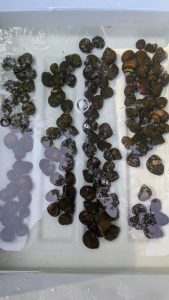
Nonnative Chinese mysterysnails collected from a Wisconsin lake just before Chef Vang prepared a tasty meal out of them.
News Releases | Wisconsin Sea Grant
News Releases | Wisconsin Sea Grant
https://www.seagrant.wisc.edu/news/eating-snails-for-science/?utm_source=rss&utm_medium=rss&utm_campaign=eating-snails-for-science
A feasibility study by the New York State Energy Research and Development Authority released late last week does not support the placement of turbines in the Great Lakes of Erie and Ontario. Read the full story by The Post-Journal.
Great Lakes Commission
https://www.glc.org/dailynews/20230104-turbines
The beaches of Lake Erie will be occupied by more than people this spring as plastic cleaning robots BeBot and PixieDrone help clean up the Great Lakes. Read the full story by Great Lakes Echo.
Great Lakes Commission
https://www.glc.org/dailynews/20230104-beach-robots
Researchers at the Great Lakes Fishery Commission believe they have found a tool to help provide spawning habitat access to native fish, without allowing access to invasive species: combining new technology with an ancient tool, the Archimedes screw. Read the full story by WOOD-TV – Grand Rapids, MI.
Great Lakes Commission
https://www.glc.org/dailynews/20230104-lamprey
A new study seeks to measure the economic impacts of the 2012 Great Lakes Water Quality Agreement, including effects on the housing market. Read the full story by Great Lakes Echo.
Great Lakes Commission
https://www.glc.org/dailynews/20230104-algae
A large plume of toxic chemicals produced by a plant that manufactures firefighting foam has seeped through groundwater to Lake Michigan’s Green Bay, scientists said Tuesday. Read the full story by The Associated Press.
Great Lakes Commission
https://www.glc.org/dailynews/20230104-pfas
Ottawa County, Michigan, received grant funding for improvements and restorative work of the wetlands at a local park. Read the full story by the Grand Rapids Business Journal.
Great Lakes Commission
https://www.glc.org/dailynews/20230104-restoration-funds
The federal government will spend $2.4 million to continue developing a long-term strategy to better manage and protect the coastlines of the Great Lakes, including Lake Ontario. Read the full story by the Oswego County News Now.
Great Lakes Commission
https://www.glc.org/dailynews/20230104-coastal-resiliency
An international report on the Great Lakes shows that two of the five Great Lakes have a strong ecosystem, while three others have notable room for improvement. Read the full story by WOOD-TV – Grand Rapids, MI.
Great Lakes Commission
https://www.glc.org/dailynews/20230104-great-lakes
The $1.7 trillion dollar spending plan recently passed by Congress includes money for a number of environmental issues in Michigan and the Great Lakes region, including the Great Lakes Restoration Initiative. Read the full story by Michigan Public Radio.
Great Lakes Commission
https://www.glc.org/dailynews/20230104-glri-funding

By Kelly House, Bridge Michigan
The Great Lakes News Collaborative includes Bridge Michigan; Circle of Blue; Great Lakes Now at Detroit Public Television; and Michigan Radio, Michigan’s NPR News Leader; who work together to bring audiences news and information about the impact of climate change, pollution, and aging infrastructure on the Great Lakes and drinking water.
Great Lakes Now
https://www.greatlakesnow.org/2023/01/michigan-democrats-aiming-erase-business-friendly-environmental-laws/
A new report by RentCafe documents the nationwide trend. So-called adaptive reuse apartments are more popular than new apartment developments from 2020-2021, the study says.
The post Cities of tomorrow are surprisingly old first appeared on Great Lakes Echo.Great Lakes Echo
http://greatlakesecho.org/2023/01/04/cities-of-tomorrow-are-surprisingly-old/
Current Watches, Warnings and Advisories for Brown (WIC009) Wisconsin Issued by the National Weather Service
https://alerts.weather.gov/cap/wwacapget.php?x=WI1266302B1468.SpecialWeatherStatement.1266302C1700WI.GRBSPSGRB.e8795dd729b8540e859d14c1b3c1adcd
Current Watches, Warnings and Advisories for Brown (WIC009) Wisconsin Issued by the National Weather Service
https://alerts.weather.gov/cap/wwacapget.php?x=WI1266301D803C.SpecialWeatherStatement.1266301DCAD8WI.GRBSPSGRB.3b77a733acfe35fc01f412b80021d336

Great Lakes Moment is a monthly column written by Great Lakes Now Contributor John Hartig. Publishing the author’s views and assertions does not represent endorsement by Great Lakes Now or Detroit Public Television.
Have you ever gone for a peaceful walk along a creek or lake and been spooked by the sound of what you think is a pterodactyl?
Great Lakes Now
https://www.greatlakesnow.org/2023/01/great-lakes-moment-great-blue-herons-stony-island/
NCEI News Feed
https://www.ncei.noaa.gov/news/exploring-effects-covid-19-pandemic-ocean-observing
Current Watches, Warnings and Advisories for Brown (WIC009) Wisconsin Issued by the National Weather Service
https://alerts.weather.gov/cap/wwacapget.php?x=WI1266301CE26C.SpecialWeatherStatement.1266301D5B84WI.GRBSPSGRB.3b77a733acfe35fc01f412b80021d336
A new study has found that a plume of per- and polyfluoroalkyl substances (PFAS) from an industrial source has made its way into Green Bay, Lake Michigan, through the movement of groundwater.
PFAS are often referred to as “forever chemicals” because they do not readily break down in the environment. They have been used to make a wide range of products resistant to water, grease, oil and stains and are also found in firefighting foams, which are a major source of environmental PFAS contamination. The chemical compounds have been shown to have adverse effects on human health.
Christy Remucal with the University of Wisconsin-Madison Department of Civil and Environmental Engineering, and postdoctoral co-investigator Sarah Balgooyen published their work in the Dec. 27, 2022, issue of the journal Environmental Science & Technology, https://pubs.acs.org/doi/10.1021/acs.est.2c06600 It was funded by a grant from the Wisconsin Sea Grant College Program.
“We used a forensics approach to investigate how the PFAS fingerprint from an industrial source changes after undergoing environmental and engineered processes,” Remucal said.
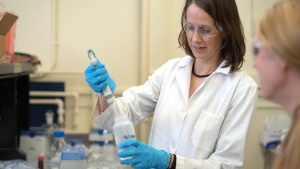
Researcher Christy Remucal in her lab on the University of Wisconsin-Madison campus is analyzing water samples taken from a known contamination site.
Researchers tracked the movement of PFAS through groundwater and surface water flow, as well as the chemicals’ presence in biosolids on land. Analysis of samples showed that, unfortunately, a large PFAS plume has moved into Green Bay, Lake Michigan.
Green Bay is one of the largest bays on the Great Lakes, an interconnected freshwater system providing drinking water for 30 million U.S. and Canadian residents. That makes it even more important for researchers to understand what contaminants are present and where they may have come from.
The source of this Great Lakes contamination has been traced to Tyco Fire Products. The company’s fire-training facilities in Marinette and Peshtigo have previously been identified as a source of PFAS contamination in groundwater and private drinking water wells in the area.
The forensic technique in this study used PFAS fingerprinting, a process that uses ratios of individual PFAS compounds to identify PFAS contaminants and their sources. In this case, the PFAS fingerprint in Green Bay is nearly identical to PFAS associated with Tyco and includes PFAS known to be active ingredients in firefighting foams. This fingerprinting method could be used to hold polluting companies responsible for the contaminated water, the researchers said.
The study also found that PFAS associated with the industrial facility are present in streams near some agricultural fields. The researchers believe this PFAS contamination may have come from the treated biosolids many farmers use to fertilize their fields.
Biosolids are the product of wastewater treatment and are rich in nutrients like nitrogen and phosphorus. PFAS in wastewater undergo extensive processing and some PFAS tend to concentrate in biosolids during treatment.
Remucal and Balgooyen determined that PFAS from biosolids can still mobilize after being spread on land. So, when farmers spread biosolids on their fields, PFAS can eventually make their way to adjacent streams.
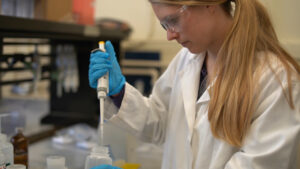
Sarah Balgooyen is a postdoctoral investigator of PFAS, which is a group of man-made chemicals known for stain- and water-resistance, but also causes cancer in humans.
“Treated biosolids are commonly spread on fields all across Wisconsin,” Balgooyen said. “This information may impact how municipalities across Wisconsin and other states approach the use of biosolids as an agricultural fertilizer.”
The post New study: Northeastern Wisconsin PFAS plume moves into Green Bay via groundwater first appeared on Wisconsin Sea Grant.News Releases | Wisconsin Sea Grant
News Releases | Wisconsin Sea Grant
https://www.seagrant.wisc.edu/news/new-study-northeastern-wisconsin-pfas-plume-moves-into-green-bay-via-groundwater/?utm_source=rss&utm_medium=rss&utm_campaign=new-study-northeastern-wisconsin-pfas-plume-moves-into-green-bay-via-groundwater
Current Watches, Warnings and Advisories for Brown (WIC009) Wisconsin Issued by the National Weather Service
https://alerts.weather.gov/cap/wwacapget.php?x=WI1266301C8ED4.SpecialWeatherStatement.1266301CE078WI.GRBSPSGRB.3b77a733acfe35fc01f412b80021d336
Summer days were always longer in Michigan than in Missouri.
The post A Missouri girl’s take on Michigan summers first appeared on Great Lakes Echo.Great Lakes Echo
http://greatlakesecho.org/2023/01/03/a-missouri-girls-take-on-michigan-summers/
Utilities and government agencies are cooperating in Michigan, Ohio, Indiana and other Great Lakes states to ease the burden and risks of energy uncertainty for low-income households.
The post Study details impact of COVID-19 pandemic on energy bills first appeared on Great Lakes Echo.Great Lakes Echo
http://greatlakesecho.org/2023/01/03/study-details-impact-of-covid-19-pandemic-on-energy-bills/
Current Watches, Warnings and Advisories for Brown (WIC009) Wisconsin Issued by the National Weather Service
https://alerts.weather.gov/cap/wwacapget.php?x=WI1266301BD228.WinterWeatherAdvisory.1266301CADB0WI.GRBWSWGRB.1a56ec5212698992121b01112bcd78e1

PFAS, short for per- and polyfluoroalkyl substances, are a group of widespread man-made chemicals that don’t break down in the environment or the human body and have been flagged as a major contaminant in sources of water across the country.
Keep up with PFAS-related developments in the Great Lakes area.
Great Lakes Now
https://www.greatlakesnow.org/2023/01/pfas-news-roundup-3m-stop-forever-chemicals-2025-global-problem-remains/
Into October, there were higher air temperatures in the entire northwest region than ever before.
The post Lake Erie algae in 2022 worse than predicted; it plateaued rather than peaked first appeared on Great Lakes Echo.Great Lakes Echo
http://greatlakesecho.org/2023/01/02/lake-erie-algae-in-2022-worse-than-predicted-it-plateaued-rather-than-peaked/
Current Watches, Warnings and Advisories for Brown (WIC009) Wisconsin Issued by the National Weather Service
https://alerts.weather.gov/cap/wwacapget.php?x=WI12662FFEFC84.SpecialWeatherStatement.1266300B96B0WI.GRBSPSGRB.3b77a733acfe35fc01f412b80021d336
Welcome to the Fall/Winter 2022 edition of the Upper Midwest Water Science Center (UMid WSC) newsletter.
This edition contains office news, a 2022 quarter 4 data highlight, thre project features, two employee features, a social media holiday feature, and all UMid WSC products published October 2022 through December 2022.
Click the link below to access the newsletter.
Wisconsin
http://www.usgs.gov/centers/upper-midwest-water-science-center/news/upper-midwest-water-science-center-fallwinter-2022?utm_source=comms&utm_medium=rss&utm_campaign=news
Below are all products released by the Upper Midwest Water Science Center in the first quarter of fiscal year 2023 (October 1, 2022 - December 31, 2022)
Wisconsin
https://www.usgs.gov/centers/upper-midwest-water-science-center/news/upper-midwest-water-science-center-products?utm_source=comms&utm_medium=rss&utm_campaign=news
Current Watches, Warnings and Advisories for Brown (WIC009) Wisconsin Issued by the National Weather Service
https://alerts.weather.gov/cap/wwacapget.php?x=WI12662FFDC274.SpecialWeatherStatement.12662FFE2930WI.GRBSPSGRB.e00b354d9f3ab8b5ee91dd5d3d965141
Current Watches, Warnings and Advisories for Brown (WIC009) Wisconsin Issued by the National Weather Service
https://alerts.weather.gov/cap/wwacapget.php?x=WI12662FFD4E70.SpecialWeatherStatement.12662FFDDB10WI.GRBSPSGRB.e00b354d9f3ab8b5ee91dd5d3d965141
Current Watches, Warnings and Advisories for Brown (WIC009) Wisconsin Issued by the National Weather Service
https://alerts.weather.gov/cap/wwacapget.php?x=WI12662FFC8EA4.WinterWeatherAdvisory.12662FFD65E0WI.GRBWSWGRB.54e50f1d69a58ad6fadc66a7d648633b
Current Watches, Warnings and Advisories for Brown (WIC009) Wisconsin Issued by the National Weather Service
https://alerts.weather.gov/cap/wwacapget.php?x=WI12662FFC85A8.SpecialWeatherStatement.12662FFCFC68WI.GRBSPSGRB.e8795dd729b8540e859d14c1b3c1adcd
Current Watches, Warnings and Advisories for Brown (WIC009) Wisconsin Issued by the National Weather Service
https://alerts.weather.gov/cap/wwacapget.php?x=WI12662FFC3B0C.SpecialWeatherStatement.12662FFCB424WI.GRBSPSGRB.4c2cad415c84659344a1a5d9c8d5d0d5
Minnesota is the land of 10,000 lakes, but I couldn’t have felt farther from the Great ones.
The post The Great Lakes live in my soul first appeared on Great Lakes Echo.Great Lakes Echo
http://greatlakesecho.org/2022/12/30/the-great-lakes-live-in-my-soul/
Each home will have all-electric appliances powered by solar panels. They will be built with sustainably harvested wood.
The post Ann Arbor developers create solar neighborhood first appeared on Great Lakes Echo.Great Lakes Echo
http://greatlakesecho.org/2022/12/30/ann-arbor-developers-create-solar-neighborhood/
Green Bay, WI
https://www.weather.gov/grb/newsletter2022
Current Watches, Warnings and Advisories for Brown (WIC009) Wisconsin Issued by the National Weather Service
https://alerts.weather.gov/cap/wwacapget.php?x=WI12641F3BF2A0.SpecialWeatherStatement.12641F3C6BB8WI.GRBSPSGRB.0f148a0d6ca15f3a9bf6ab5f8541efcf

In “Shrinking Winter,” scientists work to understand the causes and potential effects of less ice cover on the Great Lakes, a documentary photographer and three longtime ice anglers reflect on changes to the winter fishing season, and a competitive speed skater reflects on the joys of “wild ice.”
This episode originally aired in February and was one of the team’s favorites this year, so we brought it back around for the holiday season with updates.
Great Lakes Now
https://www.greatlakesnow.org/2022/12/shrinking-winter-update-ice-coverage-great-lakes-life/

By Michael Phillis, Associated Press
President Joe Biden signed a large defense bill on Friday that includes a water bill that directs the Army Corps of Engineers on major infrastructure projects to improve navigation and protect against storms worsened by climate change.
The biggest project by far this year is a $34 billion Texas coastal barrier featuring massive floodgates and other structures to protect the Houston region with its concentration of oil refineries and chemical plants, at risk during major hurricanes.
Great Lakes Now
https://www.greatlakesnow.org/2022/12/ap-bidens-signature-advances-major-projects-water-bill/
In the late 1800s, the field of limnology (the study of lakes) had its birth in North America when what is now the University of Wisconsin-Madison’s Center for Limnology began its formative years.
Zoologists Edward Birge and Chancey Juday offered vision and leadership for this take on water science. They went heavy on field work and produced dozens of papers expounding lakes’ chemistry, biology and geology. They were committed to fostering student experiences and learning.
A thread of connection to those early days of freshwater study and student support carries through to today with the arrival at the Water Resources Institute (WRI) and Sea Grant of Alison Mikulyuk, herself a graduate of that very same limnology program. She is the first-ever coordinator of Water@UW-Madison.
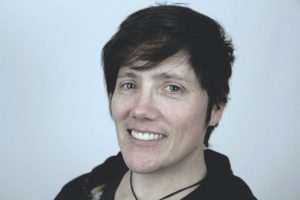
“I’m excited to join the team at the Aquatic Sciences Center.” Mikulyuk continued, “I want to build and support a caring and connected network of water researchers, one that encourages exchange and innovation. I envision a healthy and productive collaborative group, where we work together across disciplines, across agencies and with communities to find new ways of asking and answering the questions that matter for fresh water.”
Water@UW-Madison had its own beginnings more than a decade ago when a handful of water scientists—including Jake Vander Zanden, the current director of the Center for Limnology—formed an organization to foster connections among students, staff and faculty with water interests and studies. The goal at the time, Vander Zanden said, was to facilitate greater interdisciplinary collaboration and exploration.
Water@UW-Madison sponsors a fall poster session, spring symposium, student mentoring, a summer undergraduate research experience and art and freshwater science collaborations. It hosts an informative website and during the academic year publishes a weekly newsletter. In sum, it pulls together and amplifies the water expertise of more than 130 faculty and staff across more than 40 departments and programs on the Madison campus.

It further strives to broaden its reach to other campuses in the University of Wisconsin System, along with private colleges, government agencies, non-governmental organizations and civil society in Wisconsin and beyond.
Mikulyuk will also support the WRI and Sea Grant research enterprise and the programs’ robust fellowship initiatives that place post-graduates in settings with state agencies, offering cutting-edge skills and knowledge to the agencies, along with mentoring, networking opportunities and experience for the fellows.
Additionally, she will also oversee the Freshwater@UW Summer Research Scholars Program, which pairs undergraduates with research mentors. The program is in its second year and 2023 opportunities are now available for application until Feb. 15.
The post Alison Mikulyuk will assist with WRI research competition first appeared on WRI.News Release | WRI
https://www.wri.wisc.edu/news/alison-mikulyuk-will-assist-with-wri-research-competition/?utm_source=rss&utm_medium=rss&utm_campaign=alison-mikulyuk-will-assist-with-wri-research-competition
Sitting outside as the campfire crackles on a breezy summer night in the backyard while the sun finally starts to set. Seeing fireflies start to take their place among the trees.
The post Commentary: Fireflies for the win first appeared on Great Lakes Echo.Great Lakes Echo
http://greatlakesecho.org/2022/12/29/commentary-fireflies-for-the-win/
Aflatoxins are the most prevalent natural liver carcinogen. Chronic levels of exposure can hinder child growth and nutrition, according to the study.
The post Climate change prompts rise in fungal toxin first appeared on Great Lakes Echo.Great Lakes Echo
http://greatlakesecho.org/2022/12/29/climate-change-prompts-rise-in-fungal-toxin/
ANN ARBOR, MI – The Great Lakes Commission (GLC) today released a new action plan to guide the region’s efforts to make the Great Lakes more resilient to the effects of climate change. The Action Plan for a Resilient Great Lakes Basin helps to prioritize regional efforts and forms a roadmap to advance climate resilience in the Great Lakes.
“The impacts of climate change are already affecting the Great Lakes region,” said GLC Chair Todd L. Ambs of Wisconsin. “Increased variability of lake levels, more intense storm events, and more frequent flooding are adding to challenges faced by communities and the infrastructure that supports them. This action plan will help guide our work to foster climate resiliency.”
Changes in climate, increased variability of lake levels, and other changing conditions continue to affect the people, places, economy, and environment of the Great Lakes basin. The effects of these changes include increased risks to existing water resource quality and supply, agriculture, maritime navigation, infrastructure, biological organisms, shorelines and coastal zones, and existing restoration efforts.
The action plan was developed by the GLC Standing Committee on Climate Resilience, which includes representatives of local, state, provincial and federal governments, as well as the partners from the maritime and nonprofit sectors. The action plan leverages existing regional efforts and supports collaboration among jurisdictions to promote shared learning and resources, and to create strategic partnerships that accelerate efforts for a more resilient and adaptive Great Lakes basin and ensure that the waters of the Great Lakes are fishable, swimmable, and drinkable for everyone in the region.
The Great Lakes Commission, led by chair Todd L. Ambs, deputy secretary of the Wisconsin Department of Natural Resources (retired), is a binational government agency established in 1955 to protect the Great Lakes and the economies and ecosystems they support. Its membership includes leaders from the eight U.S. states and two Canadian provinces in the Great Lakes basin. The GLC recommends policies and practices to balance the use, development, and conservation of the water resources of the Great Lakes and brings the region together to work on issues that no single community, state, province, or nation can tackle alone. Learn more at www.glc.org.
For media inquiries, please contact Beth Wanamaker, beth@glc.org.
Great Lakes Commission
https://www.glc.org/news/action-plan-122822

By Kelly House, Bridge Michigan
The Great Lakes News Collaborative includes Bridge Michigan; Circle of Blue; Great Lakes Now at Detroit Public Television; and Michigan Radio, Michigan’s NPR News Leader; who work together to bring audiences news and information about the impact of climate change, pollution, and aging infrastructure on the Great Lakes and drinking water.
Great Lakes Now
https://www.greatlakesnow.org/2022/12/michigan-tribes-state-reach-tentative-deal-great-lakes-fishing-access/
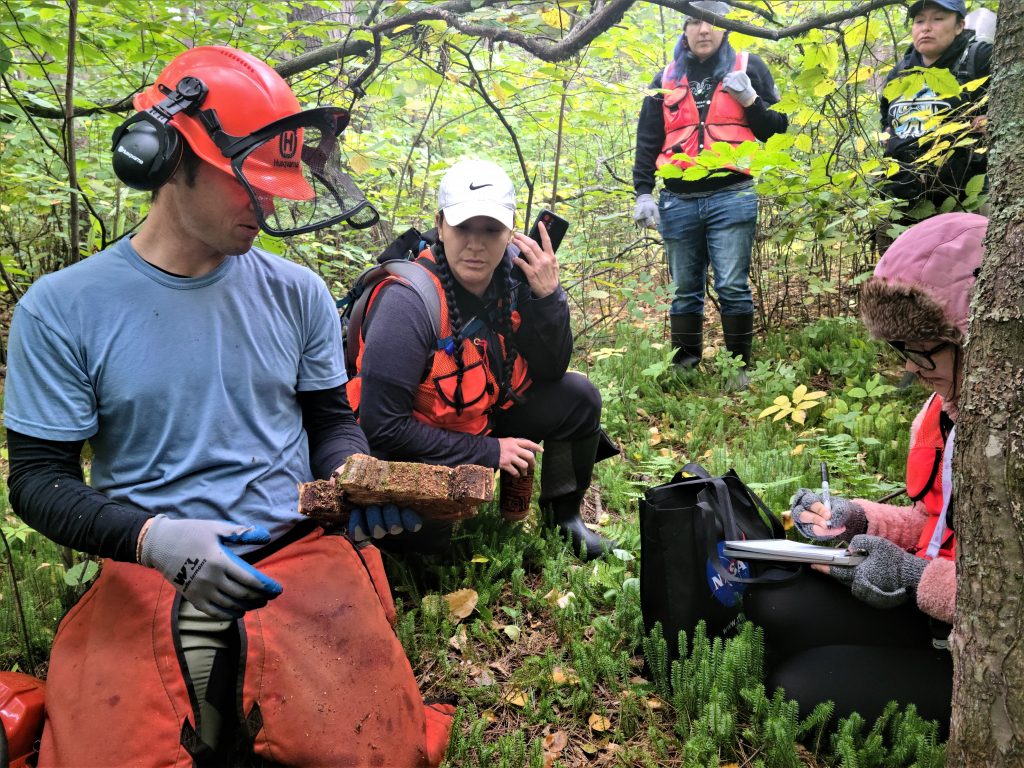
The “Nimaawanji’idimin Giiwitaashkodeng” research project team at work on Wisconsin Point. Image credit: Marie Zhuikov, Wisconsin Sea Grant
The River Talks will be held at 7 p.m. Wednesday, Jan. 11, at the Lake Superior Estuarium (3 Marina Dr., Superior, Wis.), with “Nimaawanji’idimin Giiwitaashkodeng: Working with Fire to Heal the Land on Wisconsin and Minnesota Points,” an in-person and Zoom presentation by Evan Larson, University of Wisconsin-Platteville and Melonee Montano, Red Cliff tribal member and University of Minnesota graduate student. They will describe a collaborative project that is bringing information from tree rings and oral history together to understand how the Anishinaabeg people used fire to tend the landscape and how the return of fire can contribute to both cultural and ecological restoration. Refreshments will be provided.
Join Zoom Meeting
https://uwmadison.zoom.us/j/92832940429?pwd=TUpJQWhucHB5cUxVQWxXQVF5b1ZIUT09
Meeting ID: 928 3294 0429
Passcode: 916352
One tap mobile
+19292056099,,92832940429# US (New York)
+13017158592,,92832940429# US (Washington DC)
Other River Talks will be held Feb. 8, March 8, April 12 and May 10, 2023. The March talk will be held in conjunction with the St. Louis River Summit. For more information, visit the River Talks page: go.wisc.edu/4uz720.
The River Talks are sponsored by the Lake Superior National Estuarine Research Reserve and the Wisconsin Sea Grant Program.
The post River Talks: Using fire to heal the land first appeared on Wisconsin Sea Grant.News Releases | Wisconsin Sea Grant
News Releases | Wisconsin Sea Grant
https://www.seagrant.wisc.edu/news/river-talks-using-fire-to-heal-the-land/?utm_source=rss&utm_medium=rss&utm_campaign=river-talks-using-fire-to-heal-the-land
In the late 1800s, the field of limnology (the study of lakes) had its birth in North America when what is now the University of Wisconsin-Madison’s Center for Limnology began its formative years.
Zoologists Edward Birge and Chancey Juday offered vision and leadership for this take on water science. They went heavy on field work and produced dozens of papers expounding lakes’ chemistry, biology and geology. They were committed to fostering student experiences and learning.
A thread of connection to those early days of freshwater study and student support carries through to today with the arrival at Sea Grant and the Water Resources Institute (WRI) of Alison Mikulyuk, herself a graduate of that very same limnology program. She is the first-ever coordinator of Water@UW-Madison.

“I’m excited to join the team at the Aquatic Sciences Center.” Mikulyuk continued, “I want to build and support a caring and connected network of water researchers, one that encourages exchange and innovation. I envision a healthy and productive collaborative group, where we work together across disciplines, across agencies and with communities to find new ways of asking and answering the questions that matter for fresh water.”
Water@UW-Madison had its own beginnings more than a decade ago when a handful of water scientists—including Jake Vander Zanden, the current director of the Center for Limnology—formed an organization to foster connections among students, staff and faculty with water interests and studies. The goal at the time, Vander Zanden said, was to facilitate greater interdisciplinary collaboration and exploration.
Water@UW-Madison sponsors a fall poster session, spring symposium, student mentoring, a summer undergraduate research experience and art and freshwater science collaborations. It hosts an informative website and during the academic year publishes a weekly newsletter. In sum, it pulls together and amplifies the water expertise of more than 130 faculty and staff across more than 40 departments and programs on the Madison campus.

It further strives to broaden its reach to other campuses in the University of Wisconsin System, along with private colleges, government agencies, non-governmental organizations and civil society in Wisconsin and beyond.
Mikulyuk will also support the WRI and Sea Grant research enterprise and the programs’ robust fellowship initiatives that place post-graduates in settings with state agencies, offering cutting-edge skills and knowledge to the agencies, along with mentoring, networking opportunities and experience for the fellows.
Additionally, she will also oversee the Freshwater@UW Summer Research Scholars Program, which pairs undergraduates with research mentors. The program is in its second year and 2023 opportunities are now available for application until Feb. 15.
The post New hire Alison Mikulyuk part of a connective thread of water first appeared on Wisconsin Sea Grant.
News Releases | Wisconsin Sea Grant
News Releases | Wisconsin Sea Grant
https://www.seagrant.wisc.edu/news/new-hire-alison-mikulyuk-part-of-a-connective-thread-of-water/?utm_source=rss&utm_medium=rss&utm_campaign=new-hire-alison-mikulyuk-part-of-a-connective-thread-of-water
Measurements from a 2021 study show that Lake Michigan’s salt content has risen up to fifteen times its natural level since the 1800s, but the effects of these high levels are only now being understood.
The post Volunteers find high road salt levels in Michigan waterways first appeared on Great Lakes Echo.Great Lakes Echo
http://greatlakesecho.org/2022/12/28/volunteers-find-high-road-salt-levels-in-michigan-waterways/

Since 2020 when Democrats swept into power by winning the presidency and taking control of both chambers of Congress, Great Lakes programs have had a tailwind of funding support from Washington.
The Infrastructure Investment and Jobs Act provided a $1 billion windfall for the region to accelerate clean up of the multiple toxic sites known as Areas of Concern that remain from the peak industrial period in the 1950’s and 1960’s.
Great Lakes Now
https://www.greatlakesnow.org/2022/12/smooth-sailing-or-choppy-waters-for-great-lakes-programs/
As a long-time angler and ichthyology student, I thought I knew a lot about the bowfin. But recent developments have shown that much of what I knew about this fish was wrong.
The post Commentary: New insights about an old fish first appeared on Great Lakes Echo.Great Lakes Echo
http://greatlakesecho.org/2022/12/27/commentary-new-insights-about-an-old-fish/
Since 2014, local communities have spent over $1 billion trying to clean up the water.
The post Algae depresses Lake Erie home values first appeared on Great Lakes Echo.Great Lakes Echo
http://greatlakesecho.org/2022/12/27/algae-depresses-lake-erie-home-values/